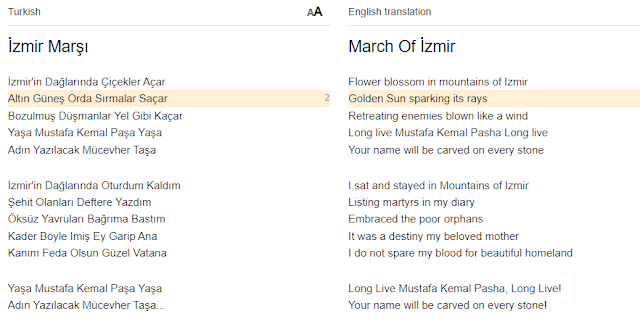I attended my first Turkish folk concert this week, a performance by the Tepecik Filarmoni Orkestrasi, a group of musicians who play Romany music, among other styles. It was an experience unlike anything I have ever heard, and my mind is honestly still relishing it.
Here's a look at some video my friend shot of the concert, held at the Sanathane Theater in Basmane, a historic area with winding, cobble-stone streets close to the center of town.
Romany music is, of course, tied to the Balkan gypsy culture, and it is very eastern in orientation and sound. The 10-piece band, led by a percussionist on the doubek drum included 3 violinists, a tambourine, a base drum, a zither, clarinet, trumpet, and a keyboardist playing bass notes.
But to their Romany songs, TFO added some Turkish folk and even some riffs on western standards. They have a really cool arrangement of Mozart's symphony #25 that they meld with Romany style to create a musical experience unlike any other. There was another song that started out with the opening lines of "Stayin' Alive" by the BeeGees but soon had everyone up, dancing and clapping along.
I really must describe Turkish dances, but I won't have space here. I'll build up some more knowledge before describing that.
At the end of the concert, the band had everyone singing along to a song that I recognized. I listened carefully. The Turkish language is starting to slow down enough for me to understand key terms. Before I left, I wrote down in my notebook, "Look up the lyric, ay-ay Mustafa Kemal pasha ay-ay."
Of course I recognized the name Mustafa Kemal. He was the general (his Turkish title at the time was "Pasha") who had liberated Izmir on 9 September 1922, 100 years ago. Later the world would know him as Kemal Atatürk
The next day I looked up the song on YouTube, and I found this version of "Izmir Marşi" by Halu Levent.
I really responded to this song in a variety of ways. First, it has the creepy choir singing, "Ha-ha-ha-ha" like those you hear in scary scenes in Lord of the Rings films and others. But it had cool footage from the Greco-Turkish War (1919-1922) during which Izmir was occupied by Greek forces, then liberated by Turkish forces on September 9, including plenty of shots of Mustafa Kemal, the blond, blue-eyed general.
Levent's performance is powerful and passionate, he recites a list of names (more about those later) and ends the song with his hand on his heart. There is no parsing it. Levant knows what this song is about: it's about Turkey and the thrum of Turkish nationalism.
The song is a march, and it's very simple. It's designed for every line of the two verses to be repeated, which makes it an ideal call-and-response song. I looked up the lyrics, and they are very evocative:
The song opens in the mountains of Izmir -- a strange choice for a city known for its harbor. The lyricist is looking down like God -- capturing the view of the city in the same way it must have looked to the Turkish Army, ten days after winning its greatest battlefield victory at Aliören, and racing 500 km westward to the sea, nipping at the heels of the retreating Greeks.
"Izmir Marşi" is an amazing piece of songwriting. Its ability to capture a moment of victory is similar to "The Star-Spangled Banner" in the United States. But the American national anthem isn't a march, nor does it capture the sacrifice of "martyrs" or the suffering of "orphans" and mothers.
I think a better comparison would be "The Battle Hymn of the Republic," a song that came within a beat of becoming the American national anthem in the early 20th Century, and one which captures the passion of those who fought to keep the country united--as Atatürk and his Turkish Army had done here in Izmir in 1922.
Update. Here's an artıcle my frıend, Semra, wrote about a new versıon of the İzmır Marşi, commıssıoned thıs year. There ıs also thıs vıdeo that is almost as good as being here.

Comments
Post a Comment